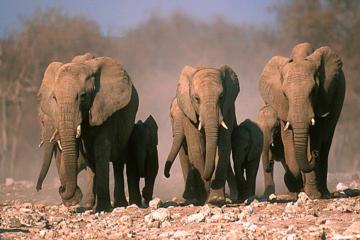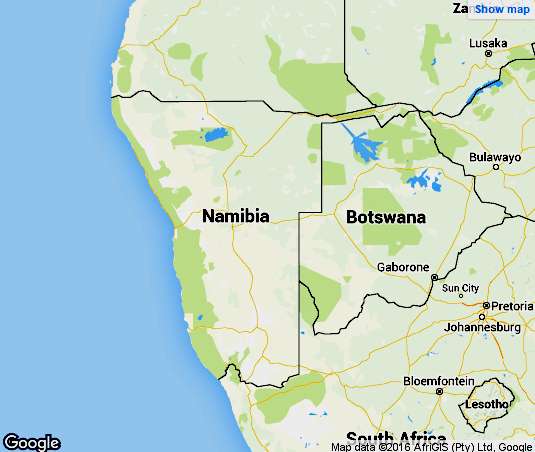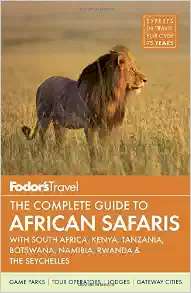« HOME • NAMIBIA • Discover Namibia
Discover Magical Namibia
Once a part of South Africa, and later known as German South-West Africa, the country of Namibia has a dark history of colonial rule, Herero genocide and oppressive apartheid. But after nearly 30 years of independence the second-least-densely populated country in the world is coming into its own.
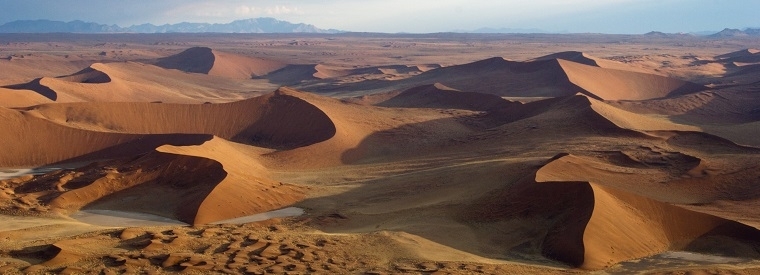
A | B | C | D | E | F | G | H | I | J | K | L | M | N | O | P | Q | R | S | T | U | V | W | X | Y | Z
|
Popular Destinations: Swakopmund • Windhoek |
» Deadvlei
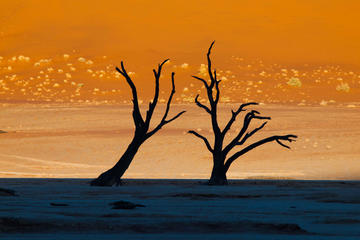
Petrified forests are a hallmark of any great American road trip. But in the desolate landscapes of sparsely populated Namibia, it's the picturesque backdrop of Deadvlei that marks the overland journey of any intrepid traveler. Located in an orange-tinted valley inside the Namib-Naukluft Park, the vast planes of Deadvlei are scattered with skeleton trees where a rushing river once flowed. This natural wonder ranks high on the country's list of breathtakingly beautiful sights - which is no small feat in a nation known for its incredibly landscapes …
» Democratic Resettlement Community
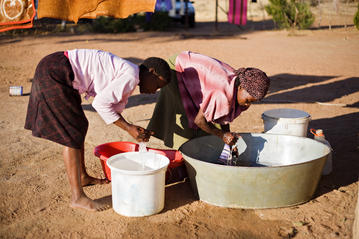
Namibia ranks high on the world's economic disparity list, as the income gap between its richest residents and the nation's poorest people is one of the largest on record. The difference between the haves and the have-nots is particularly evident on a visit to Swakopmund, where well-paved roads, modern streetlights and beautifully constructed colonial buildings sit next to quiet cafes and restaurants dishing up international cuisine. But just beyond the city limits lies an informal settlement called the Democratic Resettlement Community …
» Duwisib Castle
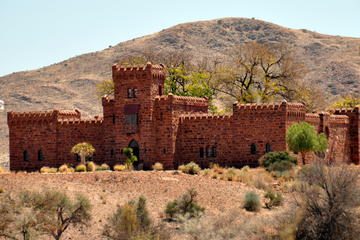
Namibia may be a relatively young country, but there's still plenty of history in this South African nation. Duwisib Castle, located on the edge of the Namib Dune Desert, is one of the most famous buildings in Namibia. Built in 1909 after the German-Nama War by a famous European Baron, Duwisib's architecture gives a strong nod to military culture and looks out over an arid valley. Although the 22-room castle was constructed entirely in Namibia, many of the materials were shipped from Germany and traveled by oxcart from the port city of Luderitz …
» Etosha National Park
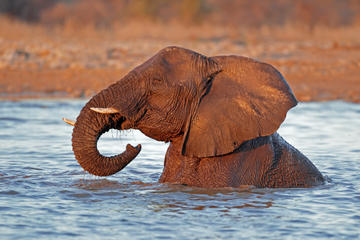
In 1907, the arid plains and vast savannahs in Namibia's northwest Kunene region were designated as the country's second game reserve. Today, what's known as Etosha National Park has become one of the most popular attractions for travelers to this southern African destination. Visitors can spot all of the continent's famous Big Five on self-guided tours or sunrise, sunset and night game drives. Luxurious rest camps offer modern amenities and their well-kept watering holes provide some of the best game viewing and photo ops during dry season …
» Fish River Canyon
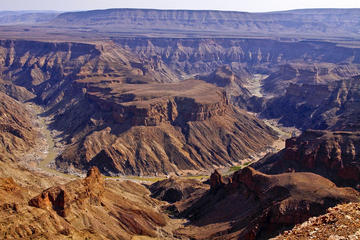
For all its beauty, Namibia can still be a rather unforgiving place. And while the vast deserts and arid plains of this diverse nation have challenged even the most intrepid of adventurers, few places put travelers to the test like hiking Fish River Canyon. This impressive gorge reaches some 550 meters deep, spans 27 kilometers in width, and stretches more than 150 kilometers in length, making it the second largest canyon in the world. And while navigating the rugged terrain at the canyon's base can make for a serious challenge …
» Kalahari Desert
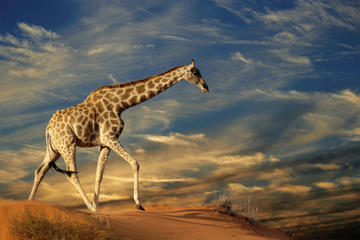
The famous Kalahari Desert spans some 900,000 square kilometers of desolation between the borders Namibia and Botswana. Its semi-arid savannah is home to more vegetation than the Namib Desert to the west, so after heavy rains it's possible for travelers to catch gazelle, kudu and springbok grazing the plains. Because the desert lacks any permanent source of water, wildlife tend to flee in search of sustenance during the dry season. The Kalahari Desert is home to several private game reserves including the Central Kalahari Game Reserve …
» Kuiseb Pass
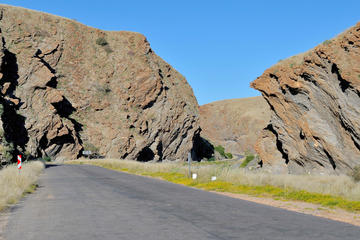
Namibia is known for its vast savannahs and open plains, but as visitors inch closer to the north, deeper in the south and further to the west they'll find rocky cliffs and steep passes that speak to another kind of beauty in this sparsely populated nation. While most of the roads that lead through these passes curve over the mountaintops, providing incredible views of the lands below. But the road at Kuiseb Pass, in Namibia's south, descends through a river along a tar and dirt strip. Though the pass can become impossible to navigate during rainy season, it's an easy voyage most of the year …
» Mondesa

During apartheid, Namibia's bigger towns were divided between the 'town,' where wealthy whites lived, and the 'location,' where blacks were forced to stay. While independence and the end of apartheid rule have banished these now archaic laws, it's still possible for visitors to Namibia to take a location tour to learn how life used to be. Visitors to Mondesa, a location in Swakopmund, say that owners of these small houses tend to offer travelers a very big welcome. Exploring the streets of this famous location put visitors up close with history …
» Namib-Naukluft National Park
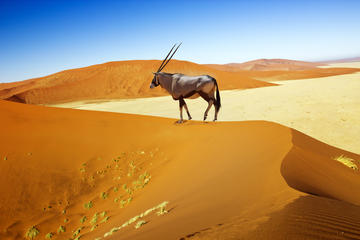
Namib-Naukluft National Park - one of the most photographed (and visited) destination in the entire country - straddles the Namib Desert, what's considered by many to be the world's oldest desert, and the Naukluft Mountain Range. Its bright orange dunes, ever-changing towers of sand, arid landscape and impressive collection of African wildlife make it a destination among travelers. And while dune boarding, sand-surfing and 4x4-riding prove popular activities for adrenaline junkies who venture to this part of the coast, it's Sossusvlei that's the real show stopper of the Namib-Naukluft …
» Okahandja
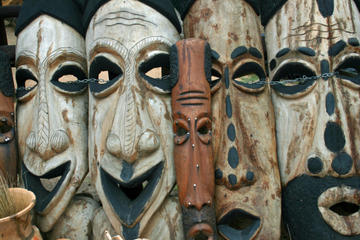
Located 70 kilometers north of Windhoek, the city of Okahandja is home to roughly 24,000 Namibians. Commonly referred to as the Garden Town of Namibia, Okahandja is home to several popular landmarks, making it an easy stop for those venturing to the north. The town is home to a military post that was established back in 1894, around the same time the city got its name. And famous colonists and Namibians like Maharero, Jan Jonker Afrikaner, Hosea Kutako and Clemens Kapuuo are buried in Okhandja …
» Pelican Point
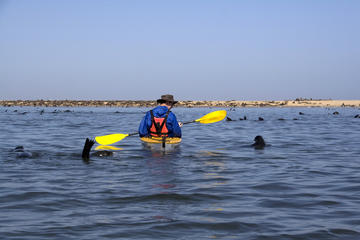
The scenic shores of the Erongo region - from the Germanic Swakopmund to the traditional port town of Walvish Bay - showcase some of the aquatic wonder this deeply diverse but still mostly desert country has to offer. And while travelers to these coastal hot spots will experience some of Namibia's most breathtaking views, a kayaking trip to Pelican Bay remains one of the most unique ways to experience the Namibian coast. Hire a 4x4 or embark on a guided tour through saltpans and coastal flats where seapipers and greater and lesser flamingos populate smooth, sandy beaches …
» Quiver Tree Forest
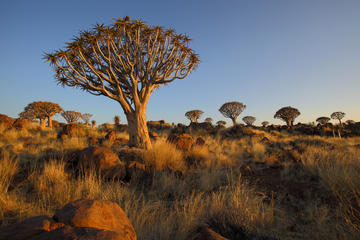
A magical forest containing one of the continent's most iconic trees lies just north of Keetmanshoop in the southern region of Karas. Some 250 Aloe dichotoma - better known as quiver trees - populate this destination that draws travelers seeking a bit of wonder from all across the globe. The thick-trunked plants with bushy looking tops got their name form the bushmen who used their branches to make quivers for their hunting bows. Travelers can spend the day exploring the forest, then head to Giants Playground, a few kilometers northeast of the trees …
» Sesriem Canyon
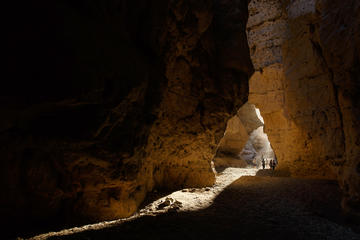
In a country known for its deserts, Sesriem Canyon holds the unique distinction of being one of the few areas in Namibia to hold water year round. The Afrikaaners who discovered this place gave it its name because of the six (ses) belts (riem) it took to lower a bucket to scoop water from the canyon. This impressive natural landscape is the second most popular tourist attraction in the park. Travelers in search of adventure love to navigate the crevasses, which shrink to just six feet wide in some places, and wander the rock formations that make Sesriem Canyon so beautifully unique …
» Skeleton Coast National Park
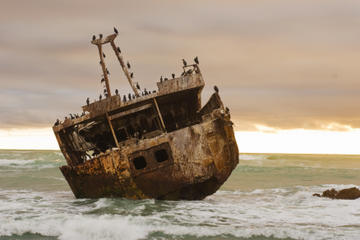
Opened in 1971, Skeleton Coast National Park was named for its nearly inaccessible shores that serve as a modern-day graveyard to dozens of tattered shipwrecks, old whale bones and sometimes even human remains. Intrepid travelers can navigate the treacherous stretch of rocky road beyond Khorixas, which leads directly to the southern section of the national park. Adventurers need an sturdy four-wheel-drive vehicle to manage the difficult pass, but it's also possible to fly in to the northern portion of the park, which is otherwise in-accessible by road …
» Solitaire
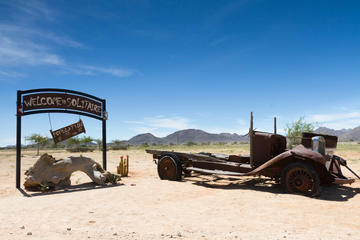
Though not much of a destination, the small settlement of Solitaire still gets its share of travelers. Located on the well-worn road from Sossusvlei and Walvish Bay, Solitaire is home to the only gas station between the two. Its German bakery and post office also make the rural spot popular among drivers looking for a quick place to pull off, relax and recover from the open road. The town was named after the popular diamond setting made famous in nearby mines, as well as for its sparse population and remote, somewhat lonely location …
» Sossusvlei
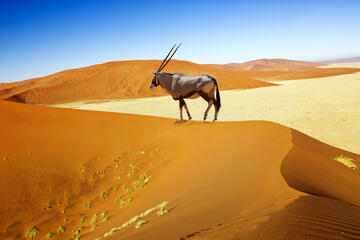
This salt and clay pan surrounded by towering red dunes just may be one of the most photographed spots in all of Namibia. Located in the southern tip of the Namib Desert, where unforgiving heat, blazing sun and golden sands are hallmarks of one of the nation's most picturesque landscape, Sossusvlei - and Naukluft National Park, home of the famous Dune 45 - provide the backdrop to some of the Namibia's most beautiful, iconic and haunting images. Sossusvlei sits about 70 kilometers beyond the park's Sesriem gate in terrain that's accessible by 4WD vehicles only …
» Spreetshoogte Pass
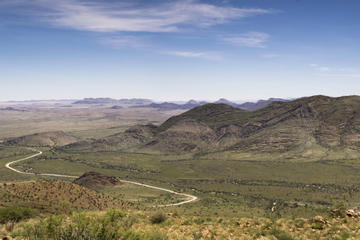
Spreetshoogte Pass, a high mountain road that links the Namib Desert to the Khomas Highland, is Namibia's steepest pass and offers travelers an impressive elevation climb, too. Created during World War II, the pass was originally created as a way to bring imported goods to the nearby farm of Nicolaas Spreeth. The rural farmer built the pass with his own hands, laying a strong foundation to support not only donkey and ox carts, but cars and trucks as well. Today, the quartzite rocks of this famous pass can be seen winding up and down the countryside …
» Tsauchab River
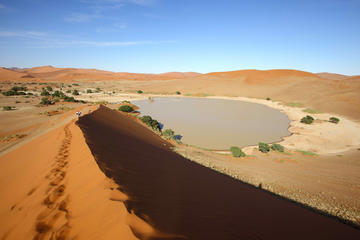
In the dry deserts of Namibia bodies of water are a rare but welcome sight. The Tsauchab River, located in the Naukluft Mountains, carved its way through the well-known Sesriem Canyon, leaving one of the most popular geological destinations in the country in its wake. Though dry most of the year, Tsauchab River levels can rapidly rise during rainy season, giving way to dangerous flash flooding and creating a small, temporary lake in the Sossusvlei salt pan. Travelers will likely find nearby campsites and guest houses to be a welcome respite …
» Walvis Bay
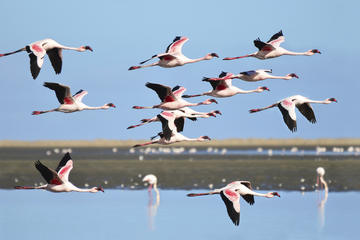
Located about 19 miles (30 kilometers) south of Swakopmund, Walvis Bay is home to some of this desert country's most scenic lagoons, dunes, wetlands and coastlines. Travelers to historic Walvis Bay, known for its deep waters and massive sea ports, can cast off from the shoreline fishing for some seriously large sharks, or chart a boat into the bitter-cold Atlantic for a different kind of deep sea adventure. Visitors can also explore the dunes or wade through wetlands, where rare migratory birds flock to ocean shores and hibernate in cooler seasons …




